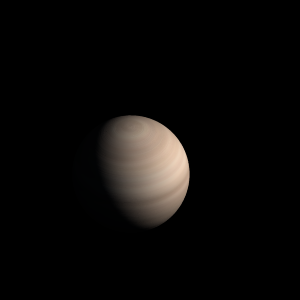|
|
Space Astro
|
Info for exoplanet "Wulyue-ch"
| Scientific (actual) data |
|---|
| Name | HD 73267 b |
| Planet status | Confirmed |
| Planet mass | 4.158 |
| Mass sini | 3.06 |
| Orbital period | 1258 |
| Semi major axis | 2.229 |
| Orbit eccentricity | 0.261 |
| Inclination | 130.843 |
| Angular distance | 0.040029 |
| Discovered | 2008 |
| Updated | 2024-06-24 |
| Omega | 228.102 |
| Tperi | 2451820 |
| K | 64.237 |
| Publication | Published in a refereed paper |
| Detection type | Radial Velocity, Astrometry |
| Mass measurement type | Astrometry |
| Star name | HD 73267 |
| Right ascension | 129.08° |
| Declination | -34.46° |
| Mag v | 8.87 |
| Mag j | 7.493 |
| Mag h | 7.126 |
| Mag k | 7.062 |
| Star distance | 50.4093 |
| Star metallicity | 0.05 |
| Star mass | 0.93 |
| Star radius | 0.935 |
| Star sp type | G7V |
| Star age | 7.4 |
| Star temperature | 5382.91 |
| Wikipedia article | HD 73267 b |
Back
| |
| Fictional info (?) |
|---|
| Suggested name | Wulyue-ch |
| Planet type | Large cold gas giant |
| Because of its rapid rotation, the planet's shape is that of an oblate spheroid (it has a slight but noticeable bulge around the equator). |
| Atmosphere | Nitric oxide | 62% |
| 2H2O | 19% |
| Hydrogen peroxide | 15% |
| Ammonium hydrosulfide (NH4SH) | 2.9% |
| Xenon | 0.17% |
| Ammonia | 0.0018% |
| Atmospheric pressure | 0.0021 bar |
 |
| No known satellites |
| Google search for Wulyue-ch |
|
Website by Joachim Michaelis
|
|
|
|